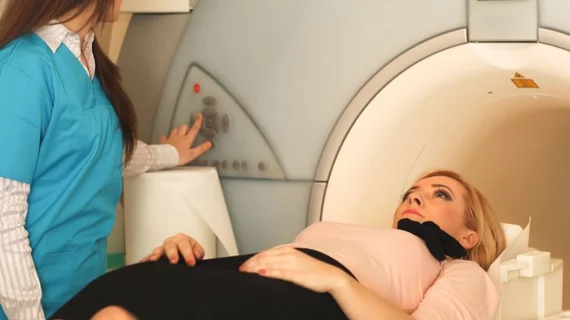Biannual MRI outperforms annual mammography for high-risk breast cancer patients
Biannual MRI is more effective than annual mammography in detecting early breast cancer in young women who have a high genetic risk of the disease, according to new research published in Clinical Cancer Research.
"The central goal of our study was to understand the needs of the highest-risk women," said study co-author Mary Claire King, PhD, professor of genome sciences and of medicine at the University of Washington (UW) in Seattle, in a release.
The research, conducted by a team from UW and the University of Chicago, showed women at risk for genetic mutations can be diagnosed earlier with MRI every six months compared to yearly mammography. The clinical study included 295 women with an average age at entry of 43.3 years and a 20 percent lifetime risk of breast cancer. More than half—53 percent—had one of 11 genetic mutations, including 75 with BRCA1 and 61 with BRCA2.
While performing 2,111 MRIs and 1,223 mammograms over four years, the researchers discovered 17 cancers. These women were then followed for an average of 5.3 years. Gregory Karczmar, PhD, professor of radiology at the University of Chicago, touted biannual MRI as a preferred method of detecting invasive breast cancer in these high-risk populations.
The tumors averaged 0.61 cm when detected, increasing the need for specific, accurate imaging.
"MRI is much more sensitive than mammography," he said. "It can find invasive breast cancers sooner than mammograms and it can rule out abnormalities that appear suspicious on a mammogram. Unfortunately, MRI is much too expensive for routine screening."

